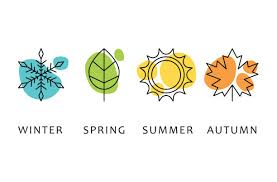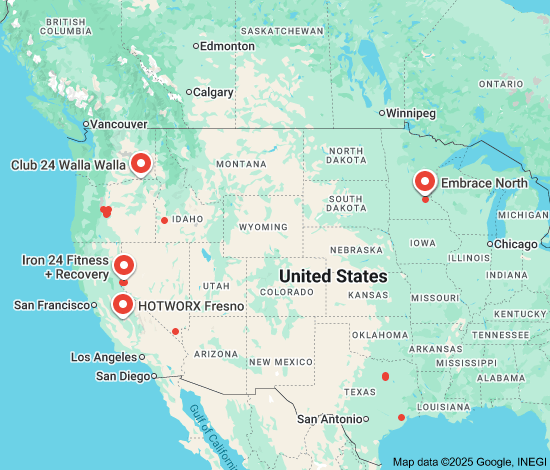The Beauty of Seasons
Seasons are nature’s way of showcasing its ever-changing beauty throughout the year. Each season brings its unique charm, colors, and experiences that captivate us in different ways.
Spring
Spring heralds the awakening of nature from its winter slumber. Flowers bloom, trees regain their lush greenery, and the air is filled with the sweet scent of blossoms. It’s a time of renewal and rejuvenation, symbolizing new beginnings and growth.
Summer
Summer is a season of warmth and vibrancy. The sun shines brightly, inviting us to bask in its golden rays. Beach days, picnics in the park, and lazy afternoons by the pool define this season of relaxation and leisure.
Fall
Fall paints nature in rich hues of red, orange, and gold as leaves change color and gently fall to the ground. Crisp air fills our lungs, while pumpkin patches and apple orchards beckon us to savor the flavors of the season. Fall is a time of transition, preparing us for the colder months ahead.
Winter
Winter blankets the world in a shimmering coat of snow, creating a magical winter wonderland. Cozy nights by the fireplace, hot cocoa by the window, and snowball fights bring joy and warmth to this chilly season. Winter is a time for reflection, introspection, and spending time with loved ones.
As each season unfolds its own story, we are reminded of nature’s cyclical rhythm and its ability to inspire awe and wonder in our hearts. Embracing the beauty of seasons allows us to appreciate the ever-changing tapestry of life that surrounds us.
Embracing the Seasons: Discovering Beauty, Change, and Growth Throughout the Year
- Seasons bring variety and diversity to the natural world, offering a rich tapestry of colors and experiences throughout the year.
- Each season has its unique charm and beauty, allowing us to appreciate different aspects of nature’s wonders.
- Seasonal changes provide opportunities for new activities and experiences, from skiing in winter to beach days in summer.
- The cycle of seasons teaches us about impermanence and the importance of embracing change in our lives.
- Different seasons can impact our mood and well-being, with sunlight in summer boosting energy levels and cozy nights in winter promoting relaxation.
- Seasonal transitions offer a chance for personal growth and reflection as we adapt to changing environments and rhythms.
7 Seasonal Drawbacks: From Allergies to Limited Outdoor Activities
- Seasonal allergies can worsen during certain seasons.
- Extreme temperatures in some seasons can be uncomfortable or dangerous.
- Seasonal affective disorder (SAD) may affect mood and mental health during darker seasons.
- Changes in weather patterns during different seasons can disrupt travel plans.
- Seasonal fruits and vegetables may not be available year-round, limiting dietary variety.
- Seasonal clothing transitions require storage space and maintenance of multiple wardrobes.
- Outdoor activities may be limited or altered due to weather conditions in certain seasons.
Seasons bring variety and diversity to the natural world, offering a rich tapestry of colors and experiences throughout the year.
Seasons bring variety and diversity to the natural world, offering a rich tapestry of colors and experiences throughout the year. Each season paints the landscape with its unique palette, from the vibrant blooms of spring to the golden hues of autumn and the glistening snowscapes of winter. This ever-changing cycle not only delights our senses but also provides a dynamic environment for flora and fauna to thrive. The shifts in seasons bring new opportunities for growth, adaptation, and renewal, showcasing the resilience and beauty of nature in all its forms.
Each season has its unique charm and beauty, allowing us to appreciate different aspects of nature’s wonders.
Each season has its unique charm and beauty, allowing us to appreciate different aspects of nature’s wonders. In the vibrant hues of spring blossoms, we witness the beauty of renewal and growth. The warmth of summer sunrays beckons us to embrace leisure and relaxation in the great outdoors. Fall’s palette of rich colors reminds us of nature’s artistry and the beauty in transitions. Winter’s serene blanket of snow invites us to find joy in cozy moments and appreciate the quiet beauty of a winter landscape. Each season offers a fresh perspective on nature’s wonders, enriching our lives with its ever-changing beauty.
Seasonal changes provide opportunities for new activities and experiences, from skiing in winter to beach days in summer.
Seasonal changes offer a diverse range of opportunities for engaging in new activities and creating memorable experiences. From the exhilaration of skiing down snowy slopes in winter to the relaxation of sun-soaked beach days in summer, each season presents unique adventures waiting to be explored. Embracing the variety of activities that each season brings allows us to fully immerse ourselves in the beauty and excitement that comes with changing climates and landscapes.
The cycle of seasons teaches us about impermanence and the importance of embracing change in our lives.
The cycle of seasons serves as a poignant reminder of the impermanence of life and the necessity of embracing change. Just as the seasons transition from spring to summer, fall, and winter, we witness the constant ebb and flow of nature’s rhythms. By observing this cyclical pattern, we learn to appreciate the beauty in impermanence and understand that change is an inherent part of our existence. Embracing the lessons that each season imparts encourages us to adapt, grow, and welcome transformation in our own lives with an open heart and a resilient spirit.
Different seasons can impact our mood and well-being, with sunlight in summer boosting energy levels and cozy nights in winter promoting relaxation.
Different seasons can have a profound impact on our mood and overall well-being. During the summer months, the abundant sunlight can uplift our spirits and boost energy levels, encouraging us to engage in outdoor activities and embrace the warmth of the season. Conversely, as winter approaches and the days grow shorter, cozy nights by the fireplace or under a blanket can promote relaxation and a sense of comfort, allowing us to unwind and recharge amidst the colder temperatures. The changing seasons offer a natural ebb and flow that influences our emotions and behaviors, highlighting the interconnectedness between nature and our mental health.
Seasonal transitions offer a chance for personal growth and reflection as we adapt to changing environments and rhythms.
Seasonal transitions provide a valuable opportunity for personal growth and introspection as we navigate through shifting environments and rhythms. Adapting to the changes that each season brings allows us to cultivate resilience, flexibility, and mindfulness. It encourages us to embrace new challenges, explore different perspectives, and appreciate the beauty of transformation both in nature and within ourselves. By tuning into the unique energies of each season, we can learn to flow with the ever-evolving cycles of life, fostering a deeper connection with our surroundings and a greater sense of self-awareness.
Seasonal allergies can worsen during certain seasons.
Seasonal allergies can worsen during certain seasons, causing discomfort and inconvenience for many individuals. As pollen levels fluctuate with the changing seasons, those sensitive to allergens may experience increased symptoms such as sneezing, congestion, itchy eyes, and respiratory issues. Spring and fall are typically peak times for seasonal allergies due to the abundance of pollen in the air from blooming plants and falling leaves. Managing allergies during these seasons often requires proactive measures such as staying indoors during high pollen counts, using allergy medications, and keeping living spaces clean to minimize exposure to allergens. The impact of seasonal allergies serves as a reminder of the importance of understanding one’s triggers and taking necessary precautions to alleviate symptoms and improve quality of life during challenging times of the year.
Extreme temperatures in some seasons can be uncomfortable or dangerous.
Extreme temperatures in certain seasons can pose challenges that range from discomfort to outright danger. During scorching summers, high temperatures can lead to heat-related illnesses and dehydration, making it crucial to stay hydrated and seek shelter from the sun. Conversely, frigid winters bring the risk of frostbite and hypothermia, emphasizing the importance of dressing warmly and staying indoors during severe cold snaps. These extreme temperature fluctuations serve as a reminder of the need for caution and preparedness to navigate the potential hazards that certain seasons may present.
Seasonal affective disorder (SAD) may affect mood and mental health during darker seasons.
Seasonal affective disorder (SAD) is a con associated with certain seasons, particularly the darker months of fall and winter. This condition can impact mood and mental health, leading to symptoms such as low energy, feelings of sadness or hopelessness, and changes in sleep patterns. The reduced exposure to natural light during these seasons is believed to play a role in triggering SAD. It is important for individuals experiencing these symptoms to seek support and treatment to manage the effects of seasonal affective disorder and improve their well-being during darker times of the year.
Changes in weather patterns during different seasons can disrupt travel plans.
Changes in weather patterns during different seasons can pose a significant challenge for travelers, often leading to disruptions in travel plans. From unexpected snowstorms in winter to severe thunderstorms in summer, fluctuating weather conditions can result in flight cancellations, road closures, and delays in transportation services. These disruptions not only cause inconvenience but also impact schedules and itineraries, potentially affecting the overall travel experience. Travelers must stay informed about weather forecasts and be prepared to adapt their plans accordingly to mitigate the impact of seasonal weather changes on their journeys.
Seasonal fruits and vegetables may not be available year-round, limiting dietary variety.
Seasonal fruits and vegetables may not be available year-round, which can limit dietary variety and access to fresh produce. When certain fruits and vegetables are only in season for a short period, it may be challenging to maintain a diverse and balanced diet throughout the year. This limitation can also impact the availability of locally sourced and nutrient-rich foods, potentially leading to a reliance on imported or processed alternatives. Embracing seasonal eating patterns requires adaptability and creativity in meal planning to ensure a well-rounded and nutritionally adequate diet despite the constraints of seasonal availability.
Seasonal clothing transitions require storage space and maintenance of multiple wardrobes.
Seasonal clothing transitions present a con in the form of requiring additional storage space and the maintenance of multiple wardrobes. As the weather changes, so does our wardrobe, leading to the need for storing off-season clothing items. This can result in cluttered closets and the challenge of keeping track of various pieces. Additionally, maintaining multiple wardrobes means more time and effort spent on organizing, cleaning, and potentially repairing garments to ensure they remain in good condition for when they are needed again. The logistical aspect of managing seasonal clothing transitions can be a hassle for many individuals seeking a streamlined and efficient wardrobe system.
Outdoor activities may be limited or altered due to weather conditions in certain seasons.
Outdoor activities may be limited or altered due to weather conditions in certain seasons, posing a con for those who enjoy spending time outside. For example, heavy rain or storms in the spring and summer months can disrupt plans for hiking, picnicking, or other outdoor pursuits. Similarly, extreme cold or snow in the winter can make activities like skiing or ice skating challenging or unsafe. These limitations can be frustrating for individuals who thrive on outdoor adventures and may require them to adapt their plans or seek alternative indoor activities during inclement weather.


